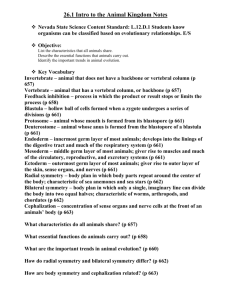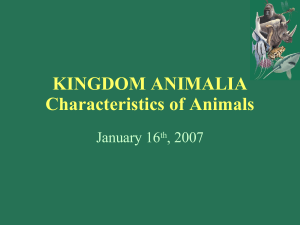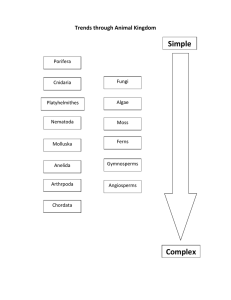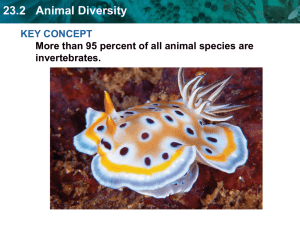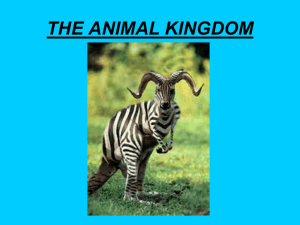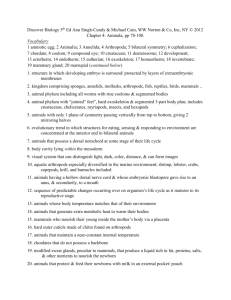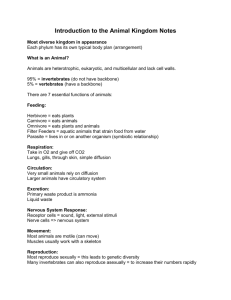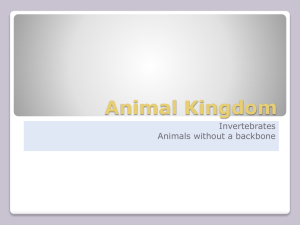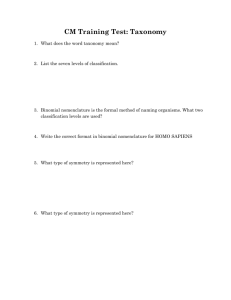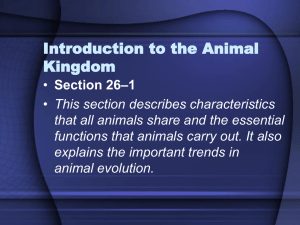Questions - Click here!
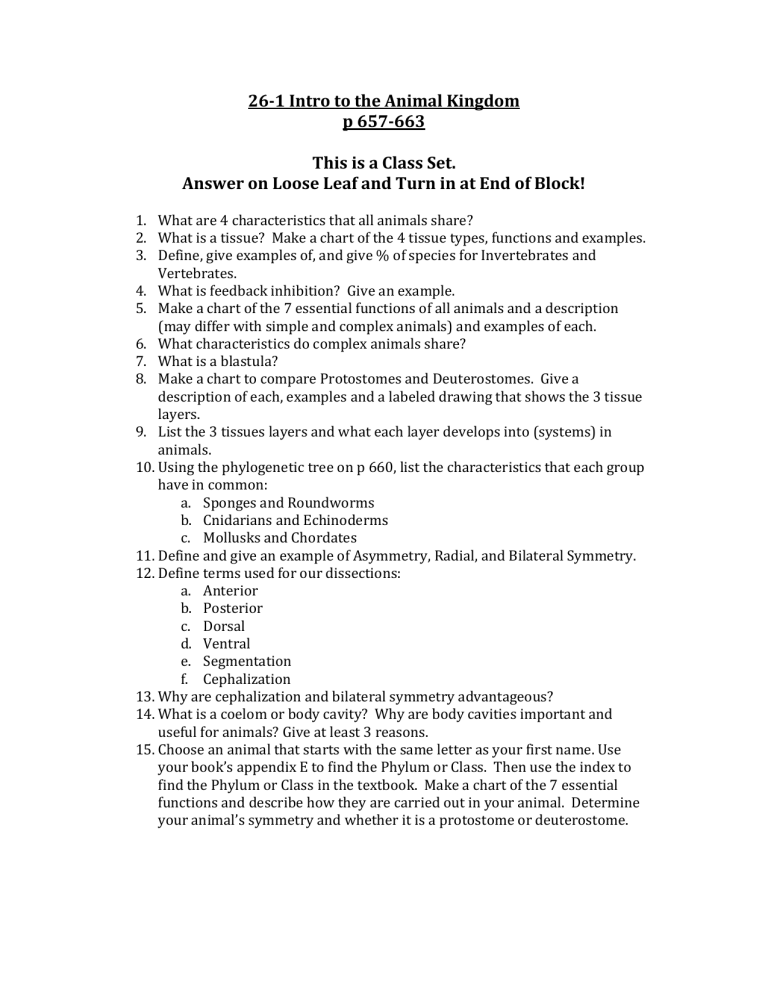
26-1 Intro to the Animal Kingdom p 657-663
This is a Class Set.
Answer on Loose Leaf and Turn in at End of Block!
1.
What are 4 characteristics that all animals share?
2.
What is a tissue? Make a chart of the 4 tissue types, functions and examples.
3.
Define, give examples of, and give % of species for Invertebrates and
Vertebrates.
4.
What is feedback inhibition? Give an example.
5.
Make a chart of the 7 essential functions of all animals and a description
(may differ with simple and complex animals) and examples of each.
6.
What characteristics do complex animals share?
7.
What is a blastula?
8.
Make a chart to compare Protostomes and Deuterostomes. Give a description of each, examples and a labeled drawing that shows the 3 tissue layers.
9.
List the 3 tissues layers and what each layer develops into (systems) in animals.
10.
Using the phylogenetic tree on p 660, list the characteristics that each group have in common: a.
Sponges and Roundworms b.
Cnidarians and Echinoderms c.
Mollusks and Chordates
11.
Define and give an example of Asymmetry, Radial, and Bilateral Symmetry.
12.
Define terms used for our dissections: a.
Anterior b.
Posterior c.
Dorsal d.
Ventral e.
Segmentation f.
Cephalization
13.
Why are cephalization and bilateral symmetry advantageous?
14.
What is a coelom or body cavity? Why are body cavities important and useful for animals? Give at least 3 reasons.
15.
Choose an animal that starts with the same letter as your first name. Use your book’s appendix E to find the Phylum or Class. Then use the index to find the Phylum or Class in the textbook. Make a chart of the 7 essential functions and describe how they are carried out in your animal. Determine your animal’s symmetry and whether it is a protostome or deuterostome.

